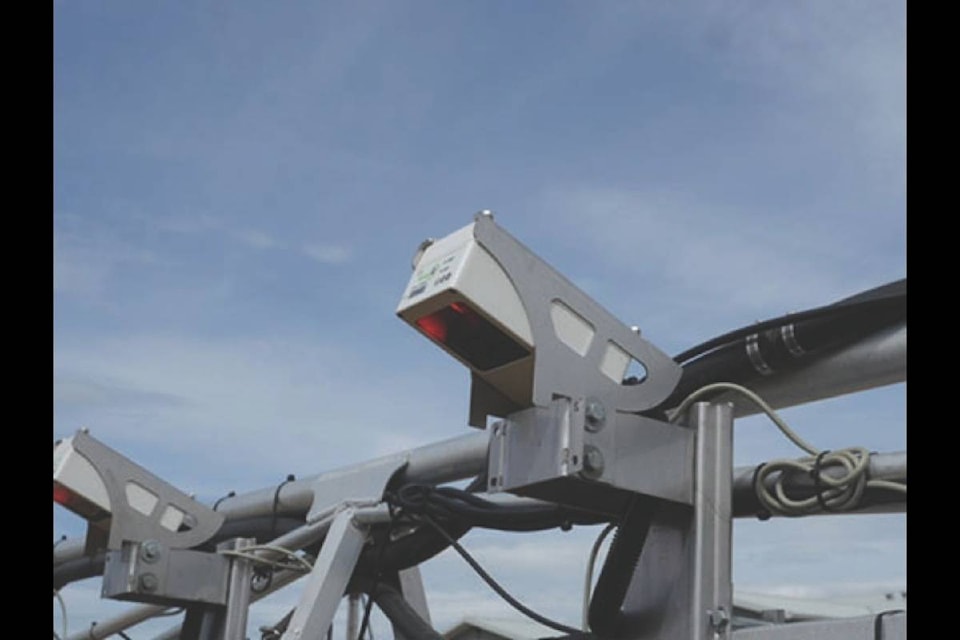In the past 10 years, the combination of advancements in technology and the developments agricultural sciences have combined for what we now call precision agriculture. Precision agriculture has multiple different streams that farmers can use to optimize their production and understanding of their crops. Utilizing satellite imagery, infield moisture measurements and maximizing scientific involvement, farmers know more about their crops and yields than ever before.
Precision farming is making life easier for farmers and others in the agriculture industry, but some may argue the biggest pay off is the cost savings.
Farmers now have the technology to pinpoint weeds in the field down to the centimetre, eliminating waste of water and chemical. Farmers are utilizing satellite imagery that can show yield of crops by square metre, showing which spots in the field have different needs. Farmers have machines to process their milk yields and contents in real time, while the cow is attached to the machine.
Kings Lake Hutterite Colony, located just outside the small hamlet of Foremost, Alberta, has started to use the technology of the 21st century in a major way. As a successful recipient of the Innovation category under the Environmental Stewardship and Climate Change program for producers under the Canadian Agricultural Partnership, Kings Lake Colony was provided with the opportunity to upgrade their spraying technology on their farm to something few people in Canada have had the chance to use.
WeedIt, a precision spraying system using advanced infrared technology, can determine the difference between crops and weed while in action, and then proceeds to only spray the specific weed with accuracy of a couple centimetres. This technology not only limits the amount of time spent spraying, but also limits the amount of chemical placed into the ground. With these operation efficiencies, the return on investment for the technology is in the tens of thousands in dollars, and water inputs are being cut in half.
“Once we saw what the machine could do and what it would change around the farm, there wasn’t much debate on whether or not we should get it,” says Mike Waldner, farm boss for the Kings Lake Hutterite Colony.
“It’s more than just the amount of chemicals that are being saved from going in the ground during spraying. We are using a fraction of the water that we used to be, which means that we are using much less fuel on our machines. It’s not a question of whether or not we should implement these practices - we have to be doing this.”
Under the Environmental Stewardship and Climate Change Program for Producers, the Canadian Agricultural Partnership has a section devoted to supporting agricultural innovation. The innovation theme supports 3 main areas:
The introduction of a proven technology, process or service that is new to the agricultural sector in Alberta.
Significant modifications to the application of existing technologies, processes or services that are applied in a setting or condition for which current applications are not generally accepted and/or practiced.
Improvements to an existing technology, process or service that represents a significant improvement in functionality, cost or performance of goods and services that are considered state of the art or new to the agricultural sector in Alberta.
Dale Chrapko, manager of environmental programming at Alberta Agriculture and Forestry, witnesses firsthand which technologies are being supported through these grants and how the different technologies are changing things on the farm.
“Producers in our province are always researching new ways of becoming more efficient, being better managers of their natural resources,” he says. “Sometimes that research leads them to technologies developed and proven in other industries or countries. The program provides an option to bring in some new technologies that would otherwise be cost prohibitive.”
The Innovation theme within the Environmental Stewardship and Climate Change Program is just one step taken by the Government of Alberta to not only advance agricultural technologies in Alberta, but to ensure that our farmlands are preserved.
Find out more about Alberta’s Environmental Sustainability and Climate Change program offered by the Canadian Agricultural Partnership or any of the other programs offered by Canadian Agricultural Partnership contributing to the agricultural education of Alberta, visit cap.alberta.ca or call 310-FARM (3276).
-by Declan Riley, Alberta Agri-news
